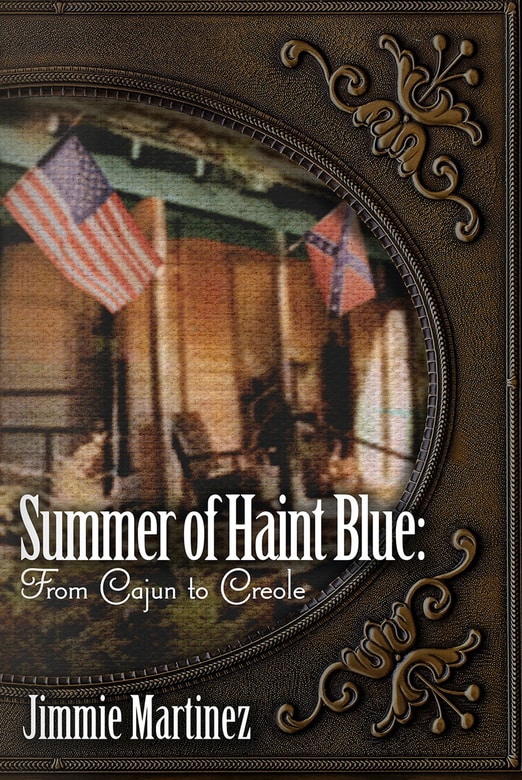
Author Jimmie Martinez captures the raw, beautiful, and painful truths of both the rural and urban South during the 1960s in his YA novel, Summer of Haint Blue. A long-form narrative study on race relations and a deep dive into that tumultuous decade, this novel is draped with Spanish moss and bayou personality, which help to top-dress the strong and compelling plot.
Told through the eyes of Justin Couvillion, a teenage boy coming to terms with his own family history and their Cajun roots, while also trying to understand the racism so embedded in Louisiana, even in his own home, this is a slow-building family drama rolling through recollections and common interactions, and painting a vivid picture of life in such times.
From building tree houses and playing football to landing a job or investigating a burned-down church, race is deeply intertwined with every aspect of life. The tender relationships between mother and son, as well as the early fumbling of youthful romance, are high points of the prose, revealing a compassionate author with a keen ear for authentic dialogue. The story maintains a good pace, remaining unpredictable but patient as it unfolds.
Without question, there are passages, turns of phrase, and sentiments that some readers may find offensive, dismissive, reductive, misogynistic, or racist, even if racism is a core subject of the narrative. While the author addresses this potential effect at the front of the book, some of these expressions or descriptions seem unnecessary and damage the author’s credibility. The thorough exploration of race, upbringing, geographic origin, and social status shows his attention to be nuanced, and a desire to get past the simplest binary of white supremacy and black oppression. However, there are some cringe-worthy moments of privilege and white saviorism, not through malice on the part of the author, but purely through depicting the black experience in an overly blunt way.
Some of the characters also function as mouthpieces for dangerous rhetoric, which makes some scenes controversial and suspenseful, but could also turn off sensitive readers. A handful of characters also resemble caricatures of black people as “simpletons,” cruel stereotypes of the past that should not be reintroduced in contemporary literature.
On the more technical side, the author occasionally falls into short, choppy sentence bursts, with the intention of either injecting the narration with personality, or building tension, but not usually achieving either. Additionally, there is a lot of idiomatic language use and narrative phrases that feel out of place for the time period. A number of the chapters end abruptly as well, or on seemingly unimportant moments, which can be jarring, and some of the paragraph break choices feel unjustified. These moments are oddly juxtaposed with the excellent colloquial passages that feel lyrical, unique, and totally appropriate for the mood and era of the novel.
While a final editorial sweep could elevate this novel from good to great, the passion of the author is clear, and this story is a visceral, thought-provoking escape to another era.
Book Links
STAR RATING
Design
Content
Editing
Get an Editorial Review | Get Amazon Sales & Reviews | Get Edited | Get Beta Readers | Enter the SPR Book Awards | Other Marketing Services























From a long time resident of Kenner – very much enjoyed your book and will be passing it on to a friend.